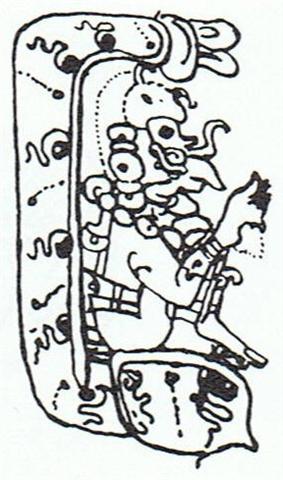However fascinating such ideas may be we have to keep to the hard facts, viz. numbers (dates). The time schedule of the explorers contains dates and we should try to correlate these dates in Manuscript E with the dates according to my understanding of the C text The explorers arrived at Oromanga in the 23rd day of the month of He Anakena ('July') and in the 20th day of the month Hora iti ('September') they left for Papa O Pea. This interval ended with the 6 reassuring stone heaps in front of the cave containing Kuukuu. I will continue to write Kuukuu with a capital letter although Manuscripte E has kuukuu. I have no hard rule for when to use a capital letter at the beginning of my words, it is more a matter of intuition. Manuscript E on the other hand was carefully written with strict rules and its kuukuu is not a personal name. Early the firstborn son of Hua Tava was written with his personal name Nguukuu (Guukuu acoording to my convention), but from the moment Ira made him into The Farmer - changed his destination - his name changed accordingly to kuukuu. Possibly we should equate the 7 explorers with the 7 planets:
I cannot believe this month Hora iti equals September (nor He Anakena July). Possibly it may be so on the Easter Island of today but hardly in the mythic time described in Manuscript E. If the farmer Kuukuu followed the behaviour of his plants and insects it meant he should 'die', i.e. go down into the earth to hibernate, 'sleep' during the winter.
North of the equator September 20 is not far from autumn equinox and we should on Easter Island look for a corresponding date at the other side of the year. I find it hard to avoid the dates February 23 respectively March 20. March 20 is a technically more correct date for the northern spring equinox than the Church date March 21, and once the end of the old year was at Terminalia = February 23.
The arrival of king Hotu Matua was 2 months later, in the 15th day of Tagaroa uri. According to my suggestions this date should correspond to May 15, which also fits well in with the glyphs in line Ca9 (reading not heliacally but nakshatra wise):
The 6 remaining explorers followed the example of the 6 'stones' of Tau-ono and greeted the arriving Sun, while the old year was running away in May 15 and looking back in Ca9-10. | ||||||||||||||||||||||||||||||||||||||||||||||||||||||||||||||||||||


